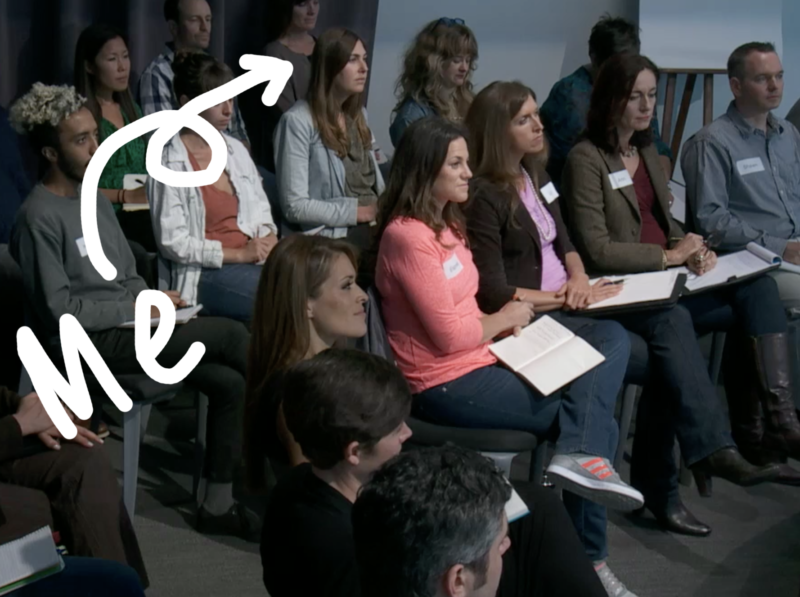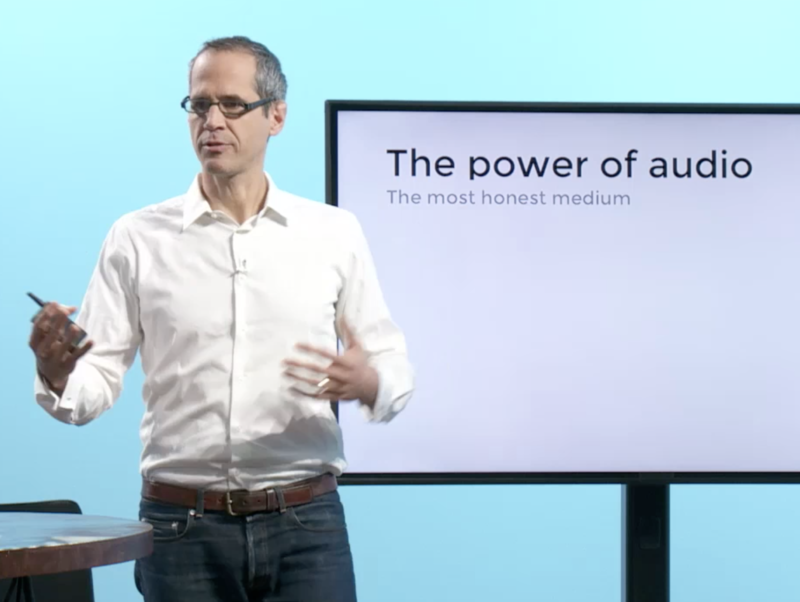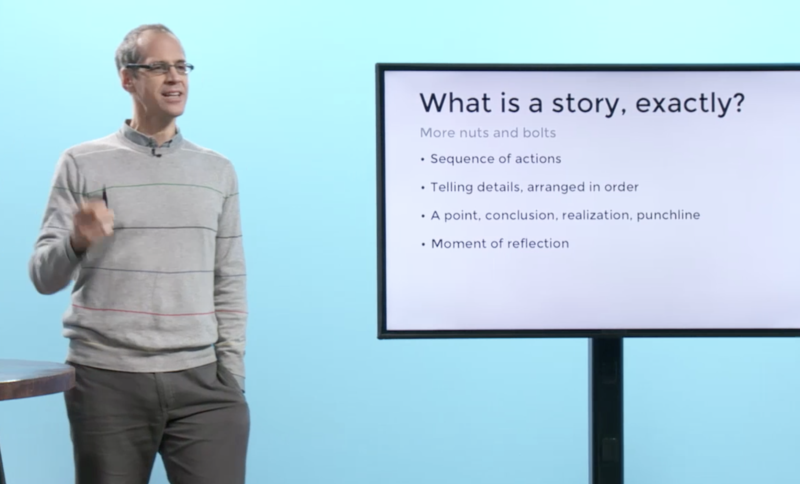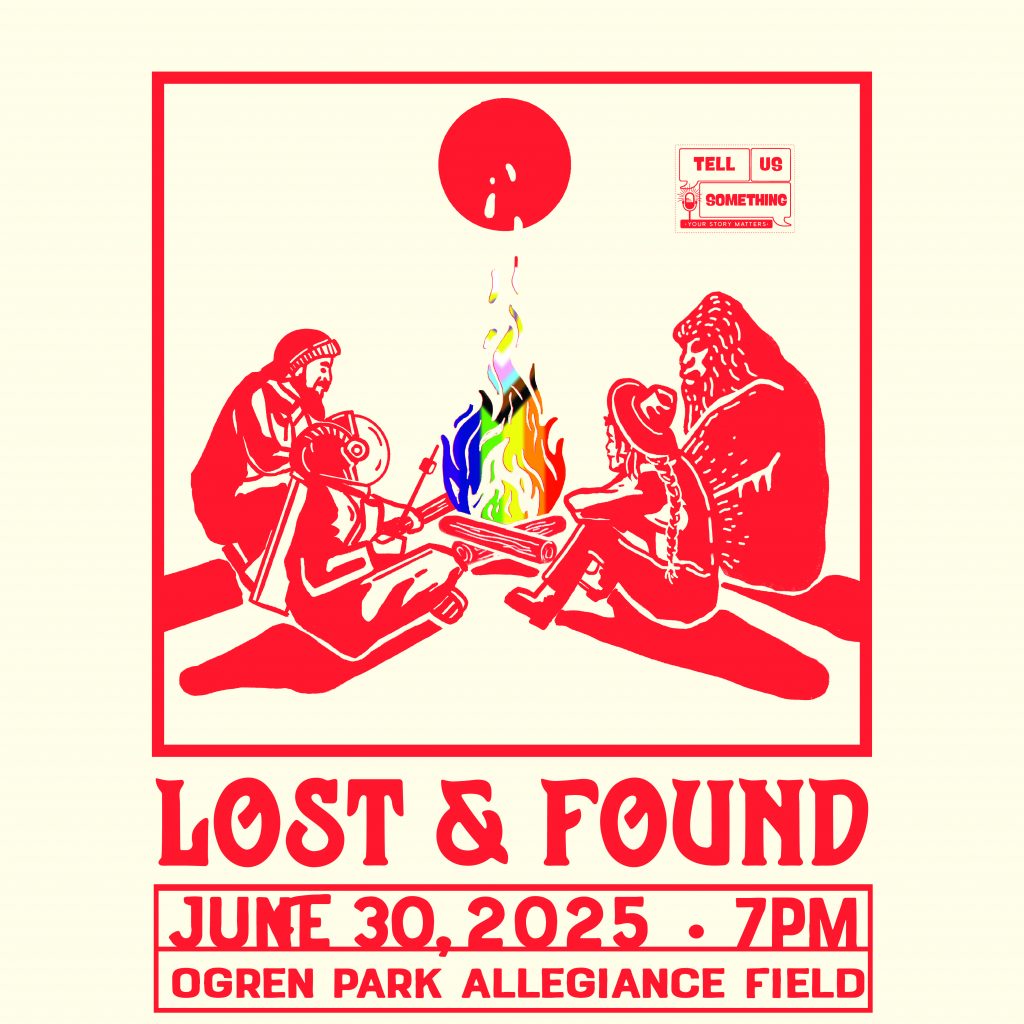Why is storytelling important?
Hello, Tell Us Something community! I’m Morgan Levey, a journalist based in Missoula, and I’m going to be guest blogging about storytelling best practices — tools, tricks, and recs for how to tell your story better. We want this blog to continue being an awesome resource for Tell Us Something participants and others because honestly, we all need help telling our story. In today’s world, most work is storytelling based — whether you’re leading a training at work, asking your boss for a raise, or talking to customers. It all comes down to a powerful narrative arc.
For my posts, I’m going to be drawing from countless podcasting and storytelling workshops I’ve had the opportunity to attend over the years, while also looking at new resources coming out of the frontline of storytelling.
 To kick things off, I’m going back in time to 2014. I had the great fortune of attending a two-day podcasting workshop hosted by Alex Blumberg, a former producer at This American Life and Planet Money. He had just launched a new project, a for-profit podcasting company. That turned into Gimlet Media, one of the most successful podcasting operations out there, home of hit shows: Start Up, Reply All, Uncivil, etc.
To kick things off, I’m going back in time to 2014. I had the great fortune of attending a two-day podcasting workshop hosted by Alex Blumberg, a former producer at This American Life and Planet Money. He had just launched a new project, a for-profit podcasting company. That turned into Gimlet Media, one of the most successful podcasting operations out there, home of hit shows: Start Up, Reply All, Uncivil, etc.
Blumberg started with the basics: Why is storytelling important?
- Storytelling is the way we tell our own stories. The desire to communicate things that happen to us is an innate need that’s built into every human. We want to share our lives and we do this by telling stories that belong to us and are worth telling.
- It is an effective means of communication. The human ear is trained to listen to a story and keep you on track. If you’re listening to a truly good story, it doesn’t take any conscious work to keep listening and stay engaged — it feels natural.
- It uses the power of narrative. Narrative is the arc of events. If used correctly, the listener is eager to find out what comes next and is completely invested in the story.
- It helps an audience make a personal connection to the storyteller. Telling a story is not just about telling what happened, it is about sharing your personal view. Most often we tell stories in the first person, allowing the listener to be engaged with the subject and ourselves in a deep and meaningful way.
Next, Blumberg tackled a subject near and dear to every podcast and radio producer’s heart: the power of audio. Audio is the most honest medium. It thrives on authentic emotion.
Below is a clip from the workshop, please listen to it. Blumberg played an authentic and emotionally powerful piece that was part of a This American Life story about a radio host named Dave Ramsey.
 I usually tear up when I hear this piece. It’s raw and unfiltered and the listener immediately feels empathy for Ramsey’s guest, a woman in a really difficult position. But let’s break down why it’s so powerful.
I usually tear up when I hear this piece. It’s raw and unfiltered and the listener immediately feels empathy for Ramsey’s guest, a woman in a really difficult position. But let’s break down why it’s so powerful.
- Audio is the most visual medium. This is a favorite saying among audio creators and may seem counterintuitive. But when you hear something, you picture it in your mind. Did you picture Dave Ramsey when you heard his voice? What about the woman? Could you see her abusive partner or her children? When we hear a story, we create mental images that don’t match reality but are visions we can intimately connect to.
- It exposes dishonesty and promotes authentic connection. With audio, you only have your voice and words to tell a story. You have to be honest because dishonesty is heard. Video can mask true emotion because there’s a visual element for the storyteller to hide behind. In the example, Ramsey knows the woman is lying about abuse because he can hear the smallness of her voice — he can hear the lie.
- Oral storytelling is part of our DNA. Storytelling is how we first began communicating. It harks back to early humans sitting around a campfire and uttering sounds to tell each other about their day.
- There’s equal power in silence or a pause. A pause can be just as telling and filled with emotion as words. Silences can be pregnant with emotion. Knowing when to pause in a story is equally important as word choice.
So, we know that storytelling is an important way of communicating and audio is particularly powerful, but what makes a story, a story?
 Story elements:
Story elements:
- A sequence of [rising] actions. We’re actually wired to listen to a sequence of actions. i.e., I left my house in the morning, I picked up the paper on the way out, and I waved at my neighbor on the way to my car.
- Telling details, arranged in order. We want to elaborate on the actions with descriptive details that are pertinent to the story. i.e., I left my house in the Rattlesnake this morning and noticed that it was a bit chilly out. I picked up my newspaper and waved at my neighbor. She wasn’t waving back, but just staring at me.
- A point, realization, or punchline. Something changes to move the story forward. In audio, you have to get to the punchline fairly quickly. Once a sequence of actions goes on for almost a minute, people start to lose interest unless something else happens. i.e., I waved to my neighbor, but she wasn’t waving back. I realized she was staring at me because I wasn’t wearing any pants!
- A moment of reflection — a conclusion. And finally, a good story will have a moment of reflection. i.e., She was staring at me because I wasn’t wearing any pants! No wonder I thought it was chilly outside.
Below is another clip from Blumberg’s presentation. This is a story told by the actor Tate Donovan, which clearly exemplifies each of the necessary story elements. Listen and see if you can pick them out.
A side note (and spoiler!): When I first heard the clip, I didn’t think twice about Tate Donovan kissing the girl on the cheek. But re-listening to it through the lens of our Me Too era, I was a little taken aback — it’s kind of sleazy. Five years ago, this story element was just a small detail, today it changes the overall tone of the story. I believe it was an innocent mistake, without any serious repercussions, but I think it is worth noting as an interesting example of how stories and their meaning age.
If you have all of the above elements, voila, you have a story! But what makes a particularly good story?
Be clear and authentic
-
- Listen to your gut. If you don’t care about the story or characters, then no one else will. It’s key that the story interests YOU! The same goes for being confused. If you’re lost, then your audience is probably as well.
- Quote dialogue. You know you’re in the middle of a good story when you start to quote or paraphrase dialogue… “and then he said… and I replied, ‘OH, NO YOU DIDN’T!’”
- Inauthenticity resolves to authenticity. In the Dave Ramsey clip, for example, the subject first tells us that her boyfriend is not hitting her, but after further probing, we hear that that’s probably not the case.
Be personal
-
- Use the personal as a way to a larger topic. If you have a profound epiphany about the meaning of life to disclose, broach it through a personal anecdote.
- Digestible moments. A good story is made up of easily digestible moments. In fact, a larger story will actually be comprised of several shorter digestible stories.
- Use analogies to carry the story. This humanizes the story and brings it to a level everyone will understand and want to continue on with you.
Be surprising
-
- What happens next?! A story should always leave you wondering what happens next. In radio, this is known as the “car moment” — a story so good that you don’t want to turn off the car radio even though you’ve arrived at your destination.
- Something must happen every 45-60 seconds. To keep listeners hooked, something interesting and compelling needs to happens every 45-60 seconds in your story. Usually, that means that the story changes direction or a new element is added — the perspective shifts, a new person starts speaking, new action, etc.
- And finally, discomfort leads to good stories. Discomfort reveals the unexpected and surprising. All of the best stories have some sort of conflict that needs to be resolved, and the best sorts of conflict leave your audience uneasy. Often, the best stories happen when you expose weakness or vulnerability, especially if it gets resolved.
And, equally important, here are a few things that don’t work in storytelling. Here are the components of a BAD story:
- Not getting to the punchline quick enough because of too many details or complexities. And then…
- Bad punchline/ bad timing — once you get there, the punchline better be good and satisfy your audience! Test your story on several audiences to get your timing down.
- Don’t skip story elements. A story can fall flat if it’s missing one of the elements we discussed earlier (a sequence of [rising] actions; telling details, arranged in order; a point, realization, or punchline; a moment of reflection). Use the elements in order.
- Jargon. Don’t give in to the expert, they like a good story too. Be conversational and use language everyone understands.
And here’s a final nugget. Blumberg gave us a formula for telling a story:
This is a story about X. It is interesting because Y.
Think of the formula as your story’s thesis. “X” is the story, “Y” is the reason/ motivation. The “Y” should…
- Be surprising or an unknown narrative
- Provide your audience with the promise of learning something new
- Show a new angle/ perspective
It looks simple — and a good story is simple — but getting to the heart of your story can be hard. Great stories are concise and focused. If you can distill your story down to filling in the X and Y, then you’re on the right track. But you don’t have to do it alone — workshop your story, tell others, and get help from friends to make it as interesting as possible.
As an alternative, the animated film company Pixar Studios has its own story formula:
Once upon a time, there was ____. Every day, ____. One day, ____. Because of that, ____. Because of that, ____.
Until finally, ____.
This is another tool that can help you build out your narrative. As practice, watch a Pixar movie and then fill in this formula. While Pixar often creates fictional stories, the same principles remain true for nonfiction. More Pixar rules can be found here.
The full Alex Blumberg presentation is available online through Creative Live, but you have to pay for it. The best way to learn how to tell a good story though is to listen to lots of stories! Podcasts are filled with great storytelling and most are available for free. The more you listen, the more you’ll innately understand what makes a story worth listening to. Like anything else, it takes practice.
